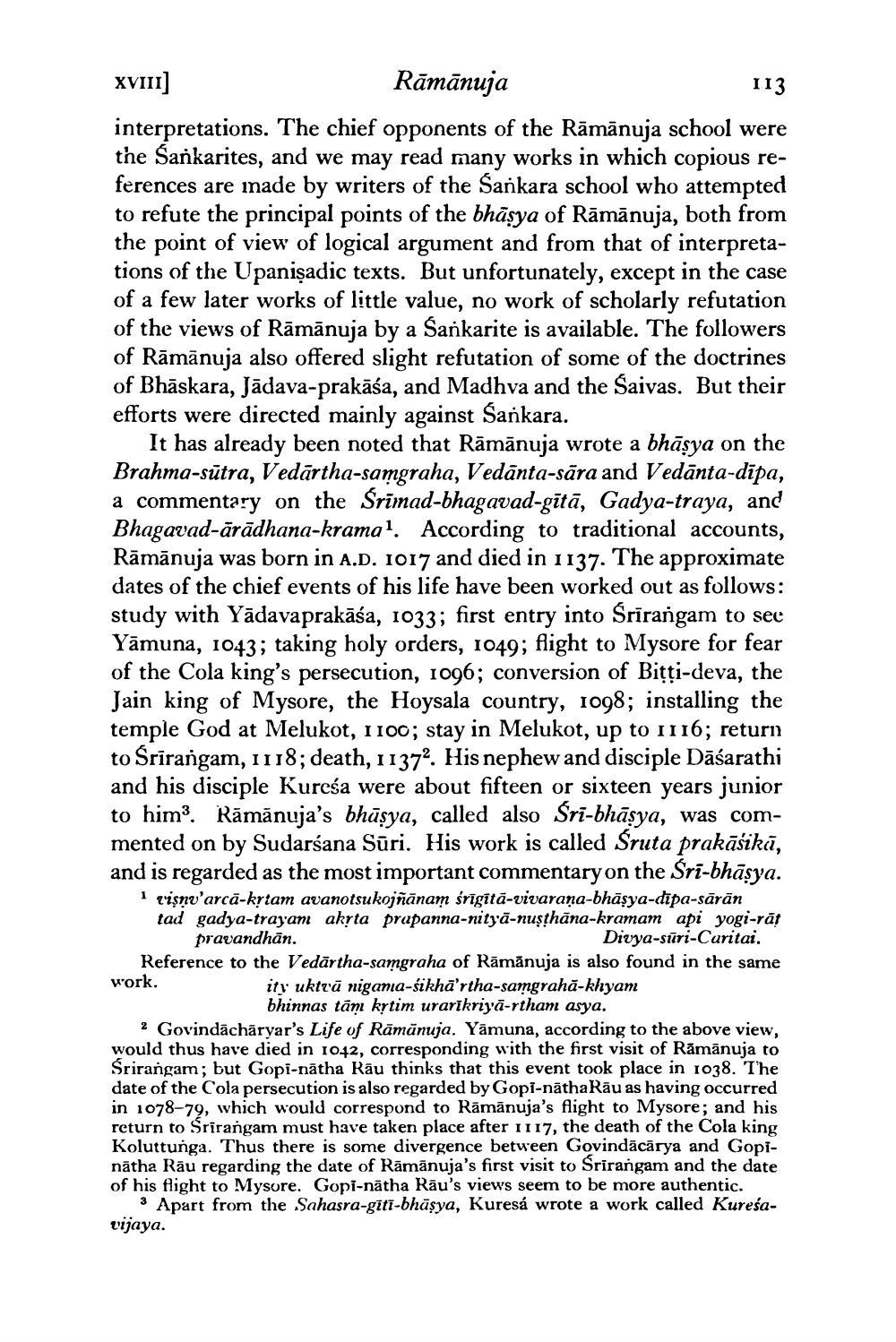________________
XVII] Rāmānuja
113 interpretations. The chief opponents of the Rāmānuja school were the Sankarites, and we may read many works in which copious references are inade by writers of the Sankara school who attempted to refute the principal points of the bhāsya of Rāmānuja, both from the point of view of logical argument and from that of interpretations of the Upanişadic texts. But unfortunately, except in the case of a few later works of little value, no work of scholarly refutation of the views of Rāmānuja by a Sankarite is available. The followers of Rāmānuja also offered slight refutation of some of the doctrines of Bhāskara, Jādava-prakāśa, and Madhva and the Saivas. But their efforts were directed mainly against Sankara.
It has already been noted that Rāmānuja wrote a bhāsya on the Brahma-sūtra, Vedārtha-samgraha, Vedānta-sāra and Vedānta-dīpa, a commentary on the Srimad-bhagavad-gitā, Gadya-traya, and Bhagavad-ārādhana-kramal. According to traditional accounts, Rāmānuja was born in A.D. 1017 and died in 1137. The approximate dates of the chief events of his life have been worked out as follows: study with Yādavaprakāśa, 1033; first entry into Srirangam to see Yāmuna, 1043; taking holy orders, 1049; flight to Mysore for fear of the Cola king's persecution, 1096; conversion of Bitti-deva, the Jain king of Mysore, the Hoysala country, 1098; installing the temple God at Melukot, 1100; stay in Melukot, up to 1116; return to Srīrangam, 1118; death, 11372. His nephew and disciple Dāśarathi and his disciple Kureśa were about fifteen or sixteen years junior to him. Rāmānuja's bhāsya, called also Śrī-bhāsya, was commented on by Sudarśana Sūri. His work is called Sruta prakāśikā, and is regarded as the most important commentaryon the Sri-bhāsya. i qişnv'arcă-krtam avanotsukojñānam śrīgītā-vivaraņa-bhāsya-dipa-sārān tad gadya-trayam akyta prapanna-nity'ā-nuşthāna-kramam api yogi-rāt pravandhān.
Divya-sūri-Curitai. Reference to the Vedārtha-samgraha of Rāmānuja is also found in the same work.
ity uktrā nigania-sikhā'rtha-samgrahā-khyam
bhinnas tām krtim urarikriyā-rtham asya. 2 Govindāchāryar's Life of Rāmānuja. Yamuna, according to the above view, would thus have died in 1042, corresponding with the first visit of Rāmānuja to Srirangam; but Gopi-nātha Rāu thinks that this event took place in 1038. The date of the Cola persecution is also regarded by Gopi-nātha Rāu as having occurred in 1078-79, which would correspond to Rāmānuja's flight to Mysore; and his return to Srirangam must have taken place after 1117, the death of the Cola king Koluttunga. Thus there is some divergence between Govindācārya and Gopinātha Rāu regarding the date of Rāmānuja's first visit to Srirangam and the date of his flight to Mysore. Gopi-nātha Rāu's views seem to be more authentic.
3 Apart from the Sahasra-gitī-bhāsya, Kuresá wrote a work called Kuresavijaya.




